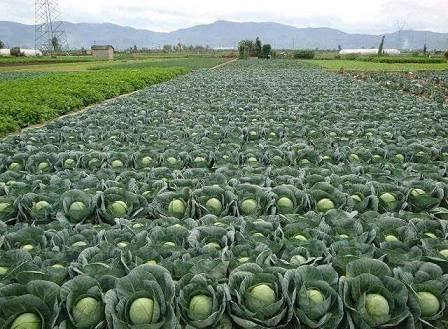World food agencies such as the Food and Agriculture Organisation (FAO)
and World Food Programme have, on several occasions, raised an alarm
over the looming and impending danger of food shortage in Nigeria. Both
agencies, as of March 2018, said that it is possible for food shortage
to affect 5.8 million Nigerians.
Despite the large expanse of
land that cuts across the country from the North, South, East and West,
it’s very shocking and rather sad that there’s not enough food to go
round.
But then, this was not the case in the past.
Agriculture was the mainstay of the Nigerian economy: groundnut pyramids
from the north; cocoa from the west; and kola nut from the east.
In
1956, Nigeria struck something sweeter and juicier than agriculture. On
that fateful day, in the village of Oloibiri, the country discovered
oil and agriculture took a back seat.
The country literarily
abdicated and abandoned every other sector for oil thus making the
Nigerian economy a mono-product economy. From one oil boom to another,
Nigeria was revelling in the pool of petrol dollars while agriculture
that has the possibility of gainfully employing and feeding Nigerians
took the backseat. Agriculture cried and cried for attention but was
neglected. This is why some people have described oil as a ‘curse’
rather than a blessing to the country.
Now, agriculture is very
frail and everyone including the government is running helter-skelter to
revive it. And oil has lost its fanfare.
Interestingly,
technology has a solution for almost every problem. In the case of
agriculture, digital farming is the tech innovation being used to solve
the Nigerian food crises. Digital farming or agriculture is the use of
new and advanced technologies, integrated into one system, to enable
farmers and other stakeholders within the agriculture value chain to
improve food production.
How digital farming works
Technology
as earlier said has a solution for almost everything. It simply depends
on how you deploy it. For those who ‘hate’ farming, digital farming is
perfect for you. And the story of digital farming is incomplete without
referencing Farmcrowdy. Farmcrowdy can be described as the first digital
farm in Nigeria.
With digital farming, you do not need to own a
farm. You simply invest your money in any of the available farms
advertised on the digital farm platform and at the end of the harvesting
cycle, you get your return on investment plus interest. The reason why
this works is that digital farm platform provides support for farmers to
guarantee improved crop yield and preservation of harvest. This will,
in turn, reduce food waste and increase food production.
The
eCommerce is a foolproof business model that has been tried and tested
by Jumia, Nigeria’s no 1 shopping destination and it has really been
successful so far. As such, it is nonplus that the eCommerce business
model is being replicated in other sectors of the Nigerian economy.
Can digital farming tackle food shortage in Nigeria?
Food
shortage is a threat to Nigeria’s existence. This is not supposed to be
the case in Nigeria because of the availability of large expanse of
fertile lands. Thankfully, digital farming arrived and every Nigerian
now has the opportunity to play a role in Agriculture even though they
do not need to work on the farm. This is the real catch. Therefore, it
is very possible for digital farming to tackle food shortage.
Digital
farmers cannot do it alone. All stakeholders must come together to find
a solution to the food shortage crises in Nigeria. For now, the digital
farmers can only do as much.






